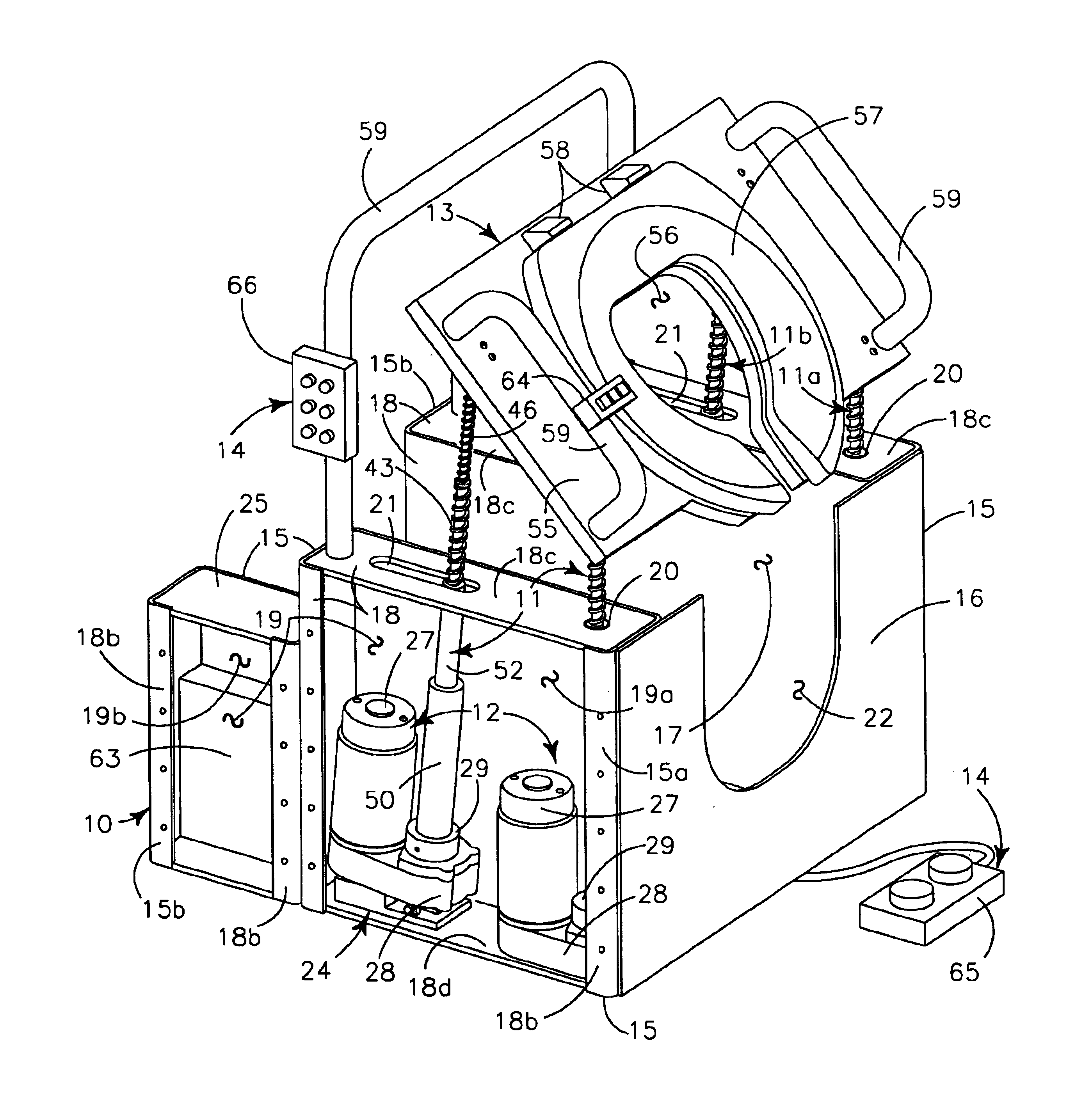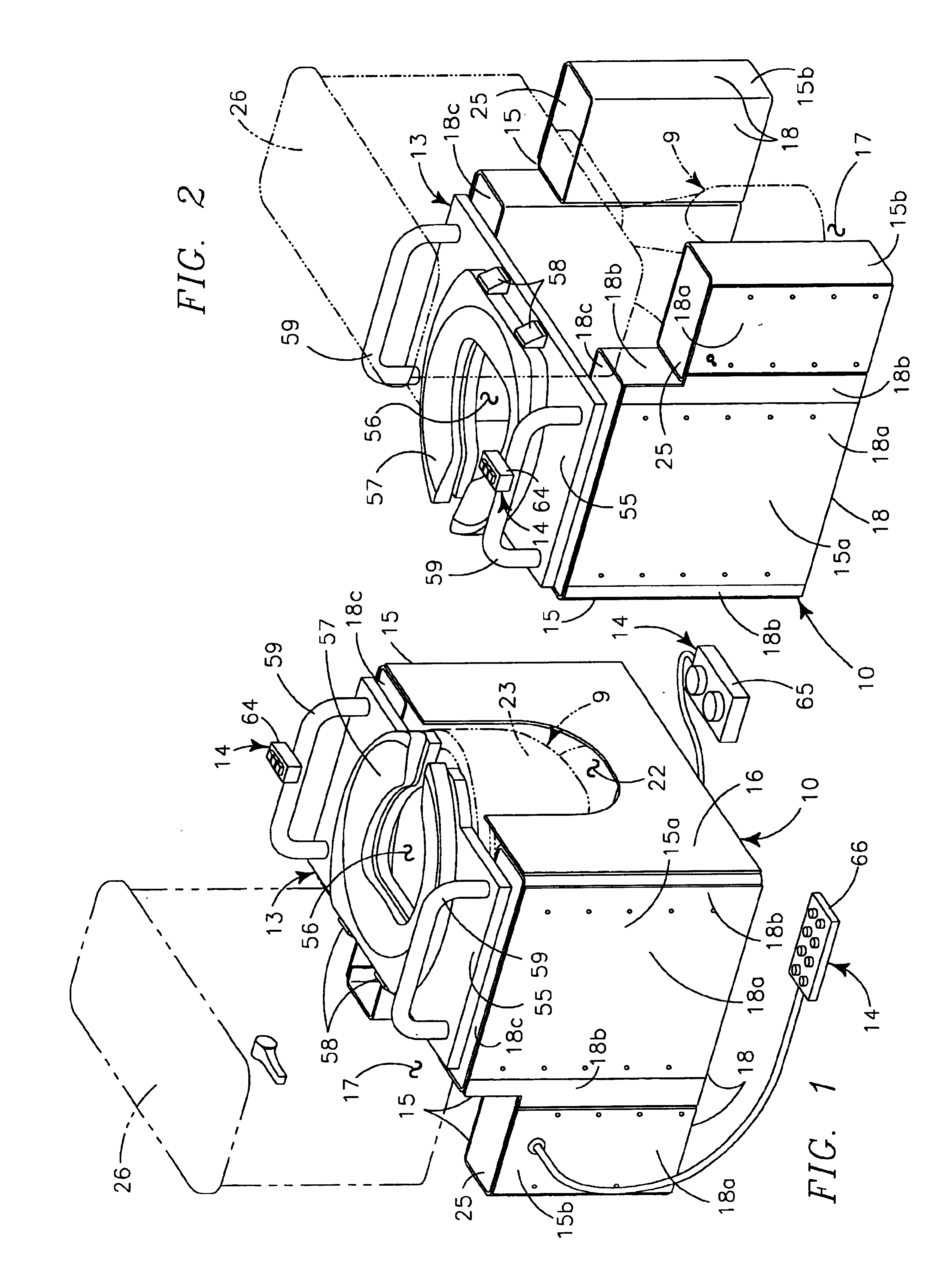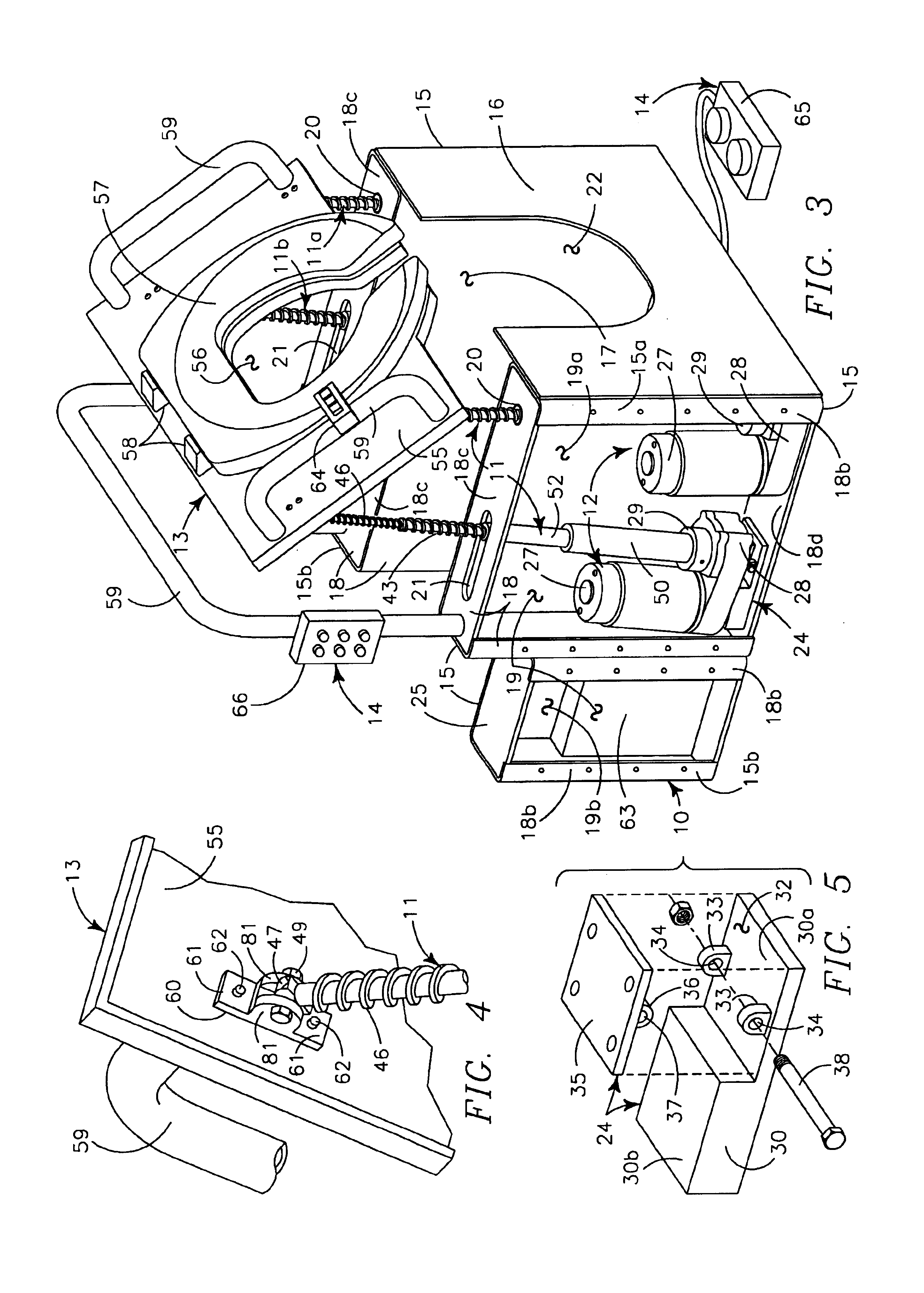Powered auxiliary toilet seat lift
a technology of auxiliary toilets and lifts, which is applied in the field of water closets or toilets, can solve the problems of not having sufficient universality to service a substantial number of prior fixtures, and the use of infirm or disabled persons can present substantial problems, and achieve the effect of simple and economic manufacture and greater safety of us
- Summary
- Abstract
- Description
- Claims
- Application Information
AI Technical Summary
Benefits of technology
Problems solved by technology
Method used
Image
Examples
Embodiment Construction
My invention generally provides casement 10 carrying quadrentially arrayed jackscrews 11 extending thereabove that are powered by powering mechanisms 12 controlled by computerized control apparatus 14 to move toilet seat structure 13 vertically and angularly in an elongate vertical plane.
Casement 10 is a U-shaped structure formed by two similar side members 15, that are mirror images of each other joined at their forward ends by forward end plate 16 to create a U-shaped structure defining medial void 17 of such configuration and size as to fit about at least one or various of the toilet stools of present day commerce, with which my lift is to be used.
Each side member 15 has sufficient width in the lateral direction that, when peripherally formed by relatively thin peripheral elements 18, it defines enclosed internal chambers 19. The forward outer side peripheral panels 18a are releasably joined to the side elements 18b to allow access to internal chamber 19a. The other surface eleme...
PUM
 Login to View More
Login to View More Abstract
Description
Claims
Application Information
 Login to View More
Login to View More - R&D
- Intellectual Property
- Life Sciences
- Materials
- Tech Scout
- Unparalleled Data Quality
- Higher Quality Content
- 60% Fewer Hallucinations
Browse by: Latest US Patents, China's latest patents, Technical Efficacy Thesaurus, Application Domain, Technology Topic, Popular Technical Reports.
© 2025 PatSnap. All rights reserved.Legal|Privacy policy|Modern Slavery Act Transparency Statement|Sitemap|About US| Contact US: help@patsnap.com



